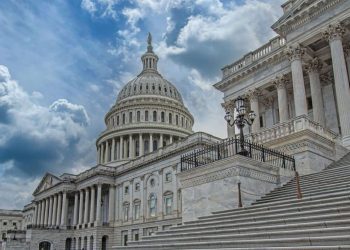RISMEDIA, October 13, 2009—Somebody had to say it. I have been literally begging the question for over two years. Except for some academics and some wild-eyed conspiracy bloggers, no one has wanted to talk about this. Maybe it’s the complexity of the process or that so many people are in on it that the topic itself has become taboo.
When the whole story is understood, it will be as though the sun fell out of the sky. There will be finger pointing galore, plenty of blame to spread around, and their will be a whole lot of foreign investors suing our banks over their worthless tranches.
To understand the systemic nature of the deceit, you must realize that it wasn’t just fraudulent mortgage loans but also car loans, student loans, and credit card debt that were being bundled together, “leveraged” and sold as “investments”. If some were good, more was better.
Not only were mortgages being shoved down our throats, but virtually every American mailing address was being bombarded with credit card checks. “Here, take some more money. We have to feed the machine. We can sell the debt over and over again to foreign investors, pension plans, and even some hapless, unsuspecting little old ladies, and we will get obscene bonuses.”
And, despite all of the outrage about outlandish bonuses, the practice continues to be defended as necessary to keep the people who did this from leaving the firms they destroyed and accepting positions elsewhere.
What is unfolding in courtrooms all over the country will prove to be a massive Ponzi scheme involving mortgage backed securities that has already resulted in the greatest transfer of wealth in history and could alter the global economic landscape for years to come.
Whose wealth? Yours and mine, for starters.
In 2007, the American Household net worth was $65.3 trillion and, by the second quarter of 2009, it had dropped to $51.1 trillion—a loss of $14.2 trillion.
For comparison, the annual Gross Domestic Product is almost $11 trillion and the National Debt is fast approaching $12 trillion, and $14.2 trillion is almost the exact equivalent of all US mortgage debt.
Last week I asked the question, “Does anyone know where all of the money went?” Apparently, if anyone knows, they aren’t saying. So, here’s my theory.
When a man gets a $150 million bonus for bankrupting a venerable one hundred year old firm, you can imagine the kinds of fortunes available for destroying entire economies. Trillions, you say?
Oh, it was a tidy sum, alright. It looks like they weren’t the only ones who saw opportunities to tap off some of that net worth, and all together, both big crooks and little, have diverted it to themselves.
Even now, the Securities and Exchange Commission is prosecuting hundreds of nominal cases usually involving less than $100 million. Just low level street crime, so far, but they are starting to set their sights on some of the kingpins and the real culprits in this mess.
When people think about mortgage fraud, they tend to think about “liars loans” and people inflating their income to qualify for a better house. Fraud for housing, rather than fraud for money, is fairly benign, and it is safe to say that many people in higher cost areas could not truthfully qualify for the home they live in.
It is important to understand that this didn’t begin with borrowers. It began with the proliferation of securitization schemes that have been evolving for years. Like most Ponzi schemes, this one went along undetected until it imploded from its sheer size. Like most Ponzi schemes, it became too large to be sustained and, like a pyramid scheme, too many people to payback.
Here is a rogue’s gallery of different types of fraud that was feeding on the securitization ladder.
Fraud by criminal enterprises against lenders.
It’s pretty easy to get a real estate license or a job in the mortgage business.
Take the Lincoln Park street gang, for example.
(Reuters) –
The selling of mortgage fraud quickly swept the country among street gangs. Mortgage fraud is easier, safer and more lucrative then any other criminal enterprise.
Nor, did it stop there. Foreign national criminal enterprises had no difficulty producing authentic looking documentation. It doesn’t matter how well qualified the buyer is, it’s how well the loan is packaged. What made all of this possible is that lenders didn’t really care about the quality of the paper; they just wanted more of it to sell.
System wide fraud against the borrower.
Sub prime loans were sold to people with excellent credit who would have easily qualified for a much more favorable loan. These discoveries are at the heart of a number of lawsuits.
There may also have been bait and switch after the application is “approved”. Usually, this is blamed on a recent change in “underwriting guidelines.”
Fraud by mortgage originators against lenders.
Consider the ease with which a loan can be funded more than once.
“Double-Funding” involves a mortgage originator sending simultaneous funding requests for the same loan to two different warehouse lenders. Both warehouse lenders, unaware of each other, would send funding for the loan to the title companies specified by the mortgage originator. The mortgage originator then disburses the money from one lender to the borrower, while directing the title company to wire the money received from the other lender to the mortgage originator’s bank account. The mortgage originators then provide fabricated mortgage documents to the warehouse lenders that falsely represented that the lender’s funds had, in fact, been used to finance borrower loans.
Fraud by lenders against borrowers, brokers, insurers (AIG), stock holders, regulators, the courts, and buyers of the securities.
Taken altogether, it weaves a rich tapestry of overlapping frauds starting, not at the bottom, but the top. In the weeks and months to come, we will learn even more about the securitization of debt in general and mortgages in particular.
Further reading:
Ten Myths about Subprime Mortgages by Yuliya Demyanyk
George W. Mantor is known as “The Real Estate Professor” for his wealth building formula, Lx2+(U²)xTFP=$? and consumer education efforts. During a career that has spanned more than three decades, he has amassed experience in new home and resale residential real estate, resort marketing, and commercial and investment property. He is currently the founder and president of The Associates Financial Group, a real estate consulting firm.
Mantor can be reached at GWMantor@aol.com.










